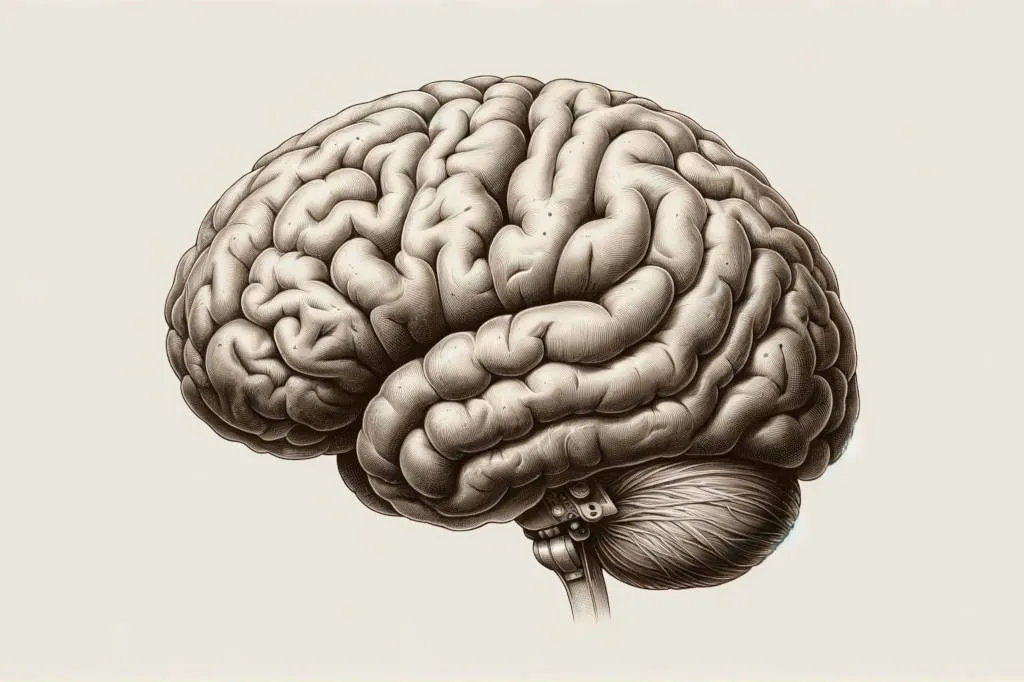Mind control techniques have long fascinated scholars, thinkers, and individuals seeking personal growth. From ancient meditation practices to modern neuroscientific methods, the quest to harness and channel the mind’s power has been a central theme in human history. This article will embark on a journey through time, exploring the evolution of these techniques, their applications, and the transformative potential they hold. Whether you’re a novice or a seasoned practitioner, this comprehensive guide aims to shed light on the profound ways we can influence our thoughts, emotions, and actions through the mastery of the mind.
Table of Contents
Historical Perspective on Mind Control Techniques
Mind control techniques, at their core, are about understanding and influencing human behavior and thought processes. Over the centuries, cultures worldwide have delved deep into the workings of the human mind, seeking ways to harness its power for various purposes, from spiritual growth to societal influence.
Ancient Civilizations and the Power of Ritual: In ancient Egypt, rituals and chants were believed to have the power to influence both the mortal realm and the gods. Similarly, in Greece, oracles were consulted for their divine insights, achieved through specific rituals. These early practices, while primitive, were the initial steps in humanity’s quest to understand and influence the mind.
Meditation and Eastern Traditions: Buddhism, Taoism, and Hinduism have long emphasized the importance of mastering one’s mind. Techniques such as meditation, yoga, and focused breathing were developed as tools to achieve a deeper understanding of oneself and the universe. These practices aimed to gain control over the wandering mind, allowing individuals to achieve enlightenment and inner peace.

Middle Ages and Hypnotic States: During the Middle Ages in Europe, hypnotic-like trances were often associated with witchcraft or divine visions. Figures like Joan of Arc claimed visions that guided their actions. The trance states, much like modern hypnosis, were early explorations into the depths of the subconscious mind.
Modern Neuroscience and the Brain: With the advent of the 20th century, the approach underwent a significant shift. The rise of psychology as a formal discipline, combined with advancements in neurology, led to a more scientific understanding of the human mind. Pioneers like Sigmund Freud explored the hidden recesses of the subconscious, introducing concepts that form the basis of many contemporary mind control techniques for personal development.
In Conclusion: The journey to understand and influence the human mind has been a constant endeavor throughout history. From ancient rituals to modern neuroscience, these techniques have evolved, yet the underlying quest remains the same: to harness the vast potential of our minds for growth, understanding, and positive change.
By exploring this rich tapestry of history, we can better appreciate the depth and breadth of tools available to us today and their deep-rooted origins in our shared human experience.
Understanding the Power of the Subconscious Mind
Our mind is like an iceberg; the conscious mind is just the tip, while the vast majority, our subconscious, remains unseen beneath the surface. The subconscious mind plays a pivotal role in our behaviors, beliefs, and overall life experience. By understanding and harnessing the power of the subconscious, powerful mind control techniques can be employed more effectively for personal development and growth.

What is the Subconscious Mind? The subconscious is the repository of our past experiences, beliefs, memories, and skills. It operates behind the scenes, guiding our actions based on the information it holds. While the conscious mind is analytical and critical, the subconscious is more emotional and impressionable, absorbing experiences without judgment.
Why is the Subconscious Mind Powerful?
- Automated Actions: Most of our daily routines, from tying our shoelaces to driving, are governed by the subconscious. Once a task becomes habitual, the subconscious takes over, allowing the conscious mind to focus on other things.
- Emotional Responses: Our emotional reactions to certain stimuli often come from the subconscious. It recalls past experiences and triggers emotions like fear, happiness, or anxiety, even if the conscious mind doesn’t immediately recognize why.
Influencing the Subconscious: These techniques often target the subconscious because it’s malleable. Positive affirmations, visualization, and hypnosis can reprogram negative patterns or beliefs held in the subconscious, replacing them with more empowering ones.
Barriers Between Conscious and Subconscious: The critical filter is a metaphorical barrier that separates the conscious and subconscious minds. For new ideas or beliefs to be accepted by the subconscious, they need to pass through this filter. Mind control techniques aim to bypass or work with this filter, ensuring that positive and beneficial changes are embedded deep within.
Tapping into the Subconscious Potential: By regularly practicing techniques such as meditation, visualization, or self-hypnosis, one can access and influence the subconscious mind. Over time, these practices can result in profound personal transformation, as old limiting beliefs are shed in favor of new, empowering ones.
In Conclusion: The power of the subconscious mind is undeniable. It shapes our behaviors, beliefs, and emotions. By understanding its influence and employing techniques, we can harness its power for positive change, growth, and overall well-being. As we dive deeper into our own minds, we realize the immense potential that lies within, waiting to be unlocked.
1. Self-hypnosis and 2. Affirmations
Harnessing the power of our own mind is a valuable skill, and two prominent mind controlling techniques that help achieve this are self-hypnosis and affirmations. Both methods target the subconscious mind, striving to reprogram limiting beliefs and negative patterns with more positive and empowering alternatives.

What is Self-hypnosis? Self-hypnosis is a process where an individual guides themselves into a relaxed, trance-like state to communicate directly with their subconscious mind. It bypasses the critical conscious mind, allowing for direct communication with deeper parts of oneself.
Benefits of Self-hypnosis:
- Stress Reduction: One of the immediate benefits of self-hypnosis is deep relaxation, helping to reduce stress and anxiety levels.
- Behavior Modification: It can be used to address specific issues, such as smoking cessation, weight loss, or overcoming phobias.
- Enhanced Creativity: Artists and writers often use self-hypnosis to tap into their subconscious creativity and overcome blocks.
How to Practice Self-hypnosis:
- Find a quiet space free from disturbances.
- Sit or lie down comfortably.
- Focus on your breathing and allow yourself to relax.
- Use guided imagery or counting techniques to deepen the state.
- Once relaxed, introduce the desired suggestions or affirmations.
- Gradually bring yourself back to full awareness.
Affirmations and Their Power: Affirmations are positive statements that can be repeated mentally, spoken aloud, or written down. Their goal is to challenge and overcome negative beliefs and replace them with positive ones.
Creating Effective Affirmations:
- Be Positive: Phrase your affirmation in a positive manner, focusing on what you want.
- Present Tense: Affirm as if the desired outcome is already happening, e.g., “I am confident” rather than “I will be confident.”
- Be Specific: Tailor the affirmation to your unique goals or challenges.
- Repeat Regularly: The power of affirmations lies in repetition. Integrate them into your daily routine.
Symbiosis of Self-hypnosis and Affirmations: Using affirmations during self-hypnosis combines the power of both techniques. As the mind is deeply relaxed during self-hypnosis, the affirmations can penetrate more effectively into the subconscious.
In Conclusion: Self-hypnosis and affirmations are potent techniques, helping individuals steer their subconscious thoughts and beliefs in desired directions. Whether seeking relaxation, behavior modification, or empowerment, incorporating these tools can be transformative in one’s personal growth journey.
3. Visualization Techniques
Visualization is one of the most effective mind controlling techniques, often used to empower individuals in achieving their goals, enhancing performance, or manifesting desired outcomes. It revolves around creating a vivid mental picture, often enhanced with sensory experiences, to simulate a desired event or outcome.

The Power of Visualization: Visualization taps into the subconscious mind, tricking it into believing that the imagined scenario is real. By doing so, it harnesses the brain’s inherent power to shape our actions, behaviors, and beliefs in alignment with the visualized outcome.
Applications of Visualization:
- Sports Performance: Many athletes mentally rehearse their sports actions to enhance their physical performance.
- Achieving Goals: Whether it’s a career milestone or a personal achievement, visualization can solidify the belief in one’s capabilities.
- Stress Reduction: Visualizing calm and serene landscapes can help reduce anxiety and promote relaxation.
Steps to Practice Visualization Effectively:
- Relax Completely: Find a quiet space and take deep breaths to enter a relaxed state.
- Use All Your Senses: Don’t just “see” the outcome; try to hear, feel, taste, and touch elements of your visualization.
- Be Specific: The more detailed and vivid the mental image, the more influential the visualization technique.
- Invoke Positive Emotions: Feel the joy, pride, or satisfaction that would accompany the achievement of the visualized scenario.
- Practice Regularly: Like any skill, the more you practice visualization, the better you become at it.
Potential Challenges in Visualization:
- Lack of Clarity: Sometimes, one might find it challenging to visualize with clarity. This is normal and can improve with practice.
- Doubts and Negative Thoughts: These can interfere with the process. It’s essential to be aware of them and gently redirect focus back to the positive visualization.
Benefits of Regular Visualization:
- Reinforced Belief: It solidifies one’s belief in their capabilities and the feasibility of their goals.
- Enhanced Motivation: By mentally experiencing the benefits of a goal, one can boost their motivation to pursue it.
- Stress Reduction: It provides an escape, allowing individuals to immerse themselves in a positive, calming scenario.
In Conclusion: Visualization techniques, when practiced with consistency and intent, can become a powerful tool in one’s mental arsenal. They not only reinforce positive beliefs and behaviors but also pave the way for actualizing one’s dreams and ambitions in the real world. Whether you’re an athlete, a professional, or someone on a personal growth journey, incorporating visualization can bring transformative changes to your life.
4. Meditation and 5. Mindfulness
Meditation and mindfulness are powerful techniques that have been practiced for centuries. Rooted in ancient traditions, they have gained significant traction in recent years for their benefits in managing stress, improving focus, and fostering self-awareness.

Understanding Meditation: Meditation is a practice where individuals use techniques, such as focusing on a specific object or their breath, to train attention and awareness, achieving a mentally clear and emotionally calm state.
Understanding Mindfulness: Mindfulness is the quality of being fully present, engaged in the moment without judgment. It’s about observing thoughts and feelings without getting caught up in them.
Benefits of Meditation and Mindfulness:
- Reduced Stress: They help in lowering the levels of the stress hormone, cortisol.
- Improved Concentration: Regular practice can enhance one’s ability to focus and decrease mind-wandering.
- Better Emotional Well-being: Meditation fosters positive feelings and can reduce symptoms of depression and anxiety.
- Increased Self-awareness: Mindfulness helps in understanding oneself better, recognizing patterns, and making positive changes.
How to Incorporate Meditation and Mindfulness in Daily Life:
- Start Small: If you’re new to meditation, begin with just a few minutes daily and gradually increase the duration.
- Consistent Practice: It’s more beneficial to meditate for shorter durations regularly than sporadically.
- Mindful Activities: Engage in activities like mindful eating, mindful walking, or even mindful listening to incorporate mindfulness in everyday tasks.
Common Misconceptions:
- “It’s all about emptying the mind”: Meditation isn’t about voiding the mind but rather observing thoughts without judgment.
- “I need to meditate for hours for it to work”: Even short, consistent practices can offer benefits.
Challenges in Meditation and Mindfulness:
- Distractions: External noises, physical discomfort, or racing thoughts can be distracting.
- Impatience: Some people might get impatient when they don’t see immediate results.
- Overthinking: Over-analyzing the practice can become a hindrance.
Tools and Apps to Assist: With the digital age, several apps like Headspace, Calm, and Insight Timer have emerged, offering guided meditations and mindfulness exercises.
In Conclusion: Meditation and mindfulness offer a plethora of benefits, transcending mental well-being and influencing various facets of life. By adopting these practices, one can navigate the complexities of modern life with more grace, clarity, and resilience. Whether you choose guided meditation, mindful activities, or traditional practices, the journey towards a more mindful existence promises profound transformation.
6. Cognitive Behavioral Techniques
Cognitive Behavioral Techniques (CBT) have emerged as some of the most effective mind control techniques, especially in the realm of mental health. By understanding and changing negative patterns of thought, individuals can create positive changes in their behavior and overall well-being.

Basics of CBT: CBT is a therapeutic approach that focuses on changing unhelpful cognitive distortions and behaviors, improving emotional regulation, and developing personal coping strategies that target solving current problems.
Common Cognitive Distortions:
- All-or-Nothing Thinking: Viewing situations in black and white terms.
- Overgeneralization: Making broad interpretations from a single or few events.
- Mental Filtering: Focusing solely on the negatives and ignoring positives.
- Catastrophizing: Always expecting the worst possible scenario.
Steps in CBT:
- Identification of Negative Thoughts: Recognizing unhelpful patterns of thinking.
- Challenge Negative Thoughts: Questioning the validity and evidence for these thoughts.
- Replace with Realistic Thoughts: Creating a balanced and realistic thought in its place.
Benefits of CBT:
- Improved Mood: Helps reduce symptoms of depression and anxiety.
- Better Stress Management: Provides tools to handle stressful situations more effectively.
- Improved Self-esteem: Reduces self-critical thoughts and enhances self-worth.
- Better Decision Making: By thinking more clearly and rationally.
How to Implement CBT Techniques:
- Stay Aware: Regularly check in with your thoughts and feelings.
- Journaling: Write down thoughts and challenge their accuracy.
- Seek Professional Help: A trained therapist can guide you through CBT sessions more effectively.
Challenges in Applying CBT:
- Initial Resistance: It can be hard to confront and challenge long-held beliefs.
- Time and Patience: CBT isn’t a quick fix; it requires regular practice and reflection.
Online Platforms and Apps: Various online platforms and apps like MoodGYM, Talkspace, and CBT-i Coach now offer CBT resources and therapies digitally, making it more accessible.
In Conclusion: Cognitive Behavioral Techniques offer a structured pathway to identify and change detrimental thought patterns. By incorporating these techniques into daily life, individuals can greatly enhance their mental health, relationships, and overall quality of life. It’s a journey of self-awareness, challenge, and growth, with rewards that resonate profoundly in one’s life.
7. Neuro-Linguistic Programming (NLP)
Neuro-Linguistic Programming, commonly referred to as NLP, is a set of tools and techniques aimed at personal development and communication. It explores the relationship between how we think (neuro), how we communicate (linguistic), and our patterns of behavior and emotion (programs). By understanding these interactions, individuals can positively alter their thought patterns and, in turn, their actions.

Foundations of NLP: NLP was developed in the 1970s by Richard Bandler and John Grinder. They believed that by modeling the communication and behavior patterns of successful individuals, one could reproduce similar results in others.
Key Principles of NLP:
- The Map is Not the Territory: Our perception of reality is our own interpretation, not the actual reality.
- There is No Failure, Only Feedback: Every outcome offers a learning opportunity.
- The Body and Mind are Interlinked: Physical changes can affect the mind and vice versa.
NLP Techniques:
- Anchoring: Associating physical touch or another stimulus with a particular emotion, allowing individuals to ‘trigger’ that emotion at will.
- Swish Pattern: Replacing an undesired behavior or response with a desired one by redirecting neural pathways.
- Meta Model: A set of questions designed to clarify information, challenge beliefs, and explore deeper details.
Benefits of NLP:
- Improved Communication: NLP helps in understanding and being understood better by others.
- Enhanced Decision-making Abilities: By understanding one’s own thought patterns.
- Emotional Management: Tools to handle emotions like anxiety, fear, and anger.
- Boost in Self-confidence: Through positive reinforcement and understanding one’s worth.
Practical Application of NLP:
- Sales and Negotiation: Communicating more persuasively and effectively.
- Therapy and Counseling: Assisting clients to move past traumas or limiting beliefs.
- Leadership and Management: Understanding team dynamics and leading effectively.
Controversies Surrounding NLP: While many swear by NLP’s efficacy, it’s essential to note that scientific backing for some NLP techniques is limited. Critics argue that it lacks empirical evidence, while proponents claim anecdotal success.
In Conclusion: Neuro-Linguistic Programming offers a unique approach to personal development and communication. While it’s crucial to approach NLP with an open mind, it’s equally important to critically evaluate its methods and outcomes. When used judiciously, NLP can serve as a valuable tool in one’s self-improvement arsenal.
The Role of Repetition
Repetition is a fundamental principle in the realm of learning and behavior modification. Whether you’re trying to master a new skill, instill a habit, or influence thought patterns, repetition often plays a pivotal role. The consistent and systematic repetition of certain actions, thoughts, or mantras can lead to profound changes in perception, behavior, and even belief systems.

Why Repetition Works: At its core, repetition reinforces neural pathways in the brain. When a particular action, thought, or emotion is repeated, the neural connections associated with that activity strengthen, making it easier and more automatic to perform or think that way in the future.
Applications of Repetition:
- Affirmations: Repeating positive affirmations can reshape one’s self-belief and outlook on life.
- Habit Formation: Consistent repetition of desired behaviors can establish new habits.
- Learning and Memory: Repetitive studying or practice strengthens memory retention.
- Advertising and Propaganda: Messages repeated often enough can influence public perception and behavior.
The Double-Edged Sword: While repetition can be a potent tool for positive change, it can also be manipulated for more nefarious purposes. Repetitive exposure to misleading or biased information can shape beliefs and perceptions, even if they’re far from the truth. This principle is often used in propaganda and misinformation campaigns.
Using Repetition Effectively: For individuals seeking to harness the power of repetition for personal growth:
- Stay Consistent: Establish a regular routine or schedule.
- Use Varied Forms: To prevent monotony, mix up your methods while keeping the core message consistent.
- Be Patient: Change, especially behavioral, takes time. Trust in the process.
In Conclusion: The role of repetition cannot be understated. Its power to shape and mold our perceptions, habits, and beliefs makes it a valuable tool for personal development. However, it’s essential to be aware of its potential misuse and remain discerning about the information and behaviors we repeatedly expose ourselves to.
Influences of Environment
Our surroundings and environment play a significant role in shaping our thoughts, behaviors, and emotions. From the physical spaces we inhabit to the social circles we engage with, various environmental factors impact our cognitive processes. Understanding the profound influence of environment is crucial for both individuals seeking personal growth and those aiming to influence larger groups.

Physical Environment and Mental State: The settings in which we live and work have a direct correlation with our mental and emotional well-being. Bright, open spaces can foster creativity and positive thoughts, while cluttered, dimly lit environments might induce feelings of stress or melancholy.
Social Environment: Humans are inherently social creatures. The company we keep, from family to friends to colleagues, can shape our perspectives, beliefs, and behaviors. Being surrounded by positive, supportive individuals can empower us, while constant exposure to negativity can hinder personal growth.
Cultural and Societal Influences: Cultural norms, societal values, and prevalent ideologies in our environment play a part in influencing our thoughts and behaviors. These factors can either limit or expand our horizons based on acceptance, traditions, and shared beliefs.
Media and Information Consumption: In today’s digital age, our environment is also virtual. The media we consume, whether news, movies, music, or online content, holds significant sway over our perceptions and beliefs.
Using Environment to Enhance Mind Control Techniques:
- Crafting Your Space: Tailor your physical environment to be conducive to your mental well-being. This could mean personalizing your workspace, decluttering regularly, or investing in good lighting.
- Choosing Your Circle: Curate your social interactions. Surround yourself with individuals who uplift you and resonate with your goals.
- Selective Media Consumption: Be mindful of the content you consume. Prioritize informative, unbiased, and positive media.
- Embracing Cultural Learnings: While holding onto beneficial cultural practices, be open to learning from other cultures to gain broader perspectives.
Conclusion: The influences of environment in the realm of mind controlling techniques are manifold. Recognizing these external factors and learning to curate them effectively can significantly aid in mastering one’s mind and influencing perceptions in wider contexts. The environment, in essence, can be both a tool and a challenge when maneuvering the intricate pathways of the mind.
Building Resilience and Emotional Regulation
The ability to bounce back from adversity and manage our emotions in the face of challenges is crucial for overall well-being. Both resilience and emotional regulation are skills that can be developed over time. Leveraging these techniques can expedite this development, providing tools to face life’s challenges with strength and poise.

What is Resilience? Resilience is the innate ability of an individual to adapt and recover from setbacks, stress, and adversity. It’s not about avoiding problems, but rather confronting them head-on and emerging stronger.
What is Emotional Regulation? Emotional regulation refers to the ability to manage and respond to an emotional experience in a controlled and acceptable manner. It’s about understanding, harnessing, and modulating your emotions.
Techniques for Building Resilience:
- Positive Reinforcement: Continuously remind yourself of past successes and challenges you’ve overcome. This strengthens self-belief.
- Adaptive Thinking: Focus on developing a flexible mindset, where you view challenges as opportunities for growth rather than insurmountable problems.
- Visualize Success: Regularly imagine overcoming challenges, reinforcing the belief that you can handle adversity.
Techniques for Emotional Regulation:
- Mindful Awareness: Being present and recognizing your emotional triggers can help in managing reactions.
- Breathing Techniques: Deep, controlled breathing can help in calming immediate emotional responses.
- Cognitive Reframing: Challenge and change negative thought patterns into more positive, realistic ones.
The Synergy of Resilience and Emotional Regulation: Building resilience goes hand in hand with emotional regulation. While resilience helps in recovering from challenges, emotional regulation ensures that reactions to these challenges are measured and effective.
Conclusion: Building resilience and honing emotional regulation are vital for personal growth and well-being. Through the adoption of specific techniques, individuals can better navigate life’s ups and downs, ensuring not only survival but flourishing in the face of adversity. Embracing these techniques is a proactive step towards a more balanced and harmonious life.
Harnessing the Power of Sleep and Dreams
Sleep is more than just a restorative necessity for our bodies. It’s a gateway to our subconscious and a tool that, when understood and harnessed correctly, can greatly amplify our mind controlling techniques. Dreams, on the other hand, offer a unique insight into our deepest fears, desires, and experiences.

The Science of Sleep: Sleep consists of multiple stages, each serving a different function. The most intriguing for many is the REM (Rapid Eye Movement) stage, where the majority of our dreams occur.
Dreams: A Window to the Subconscious Dreams are the mind’s way of processing emotions, experiences, and information. They can serve as a mirror reflecting unresolved issues or as a playground for our most profound desires.
Mind Control Techniques and Sleep:
- Intentional Dreaming: Before sleeping, set an intention or question you’d like answered. The subconscious might process this during sleep and offer insights via dreams.
- Sleep Meditation: A calm mind fosters better sleep. Meditative techniques at bedtime can improve sleep quality and, in turn, cognitive functions.
- Affirmations: Repeating positive affirmations before sleep can penetrate the subconscious more deeply, reinforcing desired beliefs or behaviors.
Harnessing Dream Power:
- Dream Journaling: Keep a journal by your bedside. Recording dreams upon waking can help in identifying patterns, emotions, or recurring themes.
- Lucid Dreaming: This advanced technique allows one to become aware during a dream and even control its outcome, offering opportunities for self-exploration and problem-solving.
- Dream Interpretation: Understanding common dream symbols can provide insights into personal situations or emotions.
The Rejuvenating Effects of Quality Sleep: Prioritizing quality sleep boosts mental clarity, emotional regulation, and overall health. It’s a foundation upon which effective techniques can be built.
Conclusion: Harnessing the power of sleep and dreams is an exciting frontier for self-growth and understanding. Recognizing the intertwined relationship between sleep, dreams, and our subconscious mind can lead to profound personal insights and enhanced mental strength. By cultivating good sleep habits and paying attention to our dream world, we can unlock a powerful tool in our quest for self-mastery.
Limitations and Ethical Considerations
While powerful mind control techniques have the potential to reshape our thought processes and behaviors for the better, it’s essential to approach them with caution and awareness. There are inherent limitations and ethical considerations to keep in mind when delving into the realms of influencing the mind.

Understanding the Limits: No technique guarantees universal success. Individual experiences and results may vary based on several factors like personality, receptiveness, and personal history.
Potential for Misuse: There’s a thin line between self-help and manipulation. Using these techniques on others without their knowledge or consent is ethically questionable and can lead to harmful outcomes.
Dependency Risks: Relying solely on these techniques without addressing root causes of issues can lead to dependency, avoiding the real work required for genuine change and healing.
Cultural Sensitivities: Certain techniques may originate from specific cultures or spiritual practices. Using them without understanding or respecting their context can be considered cultural appropriation.
Vulnerability and Suggestibility: Some techniques may render individuals more susceptible to suggestions, leading to unintended influence or manipulation from external sources.
Ethical Practice: For professionals using these techniques in therapy or coaching, it’s paramount to adhere to ethical guidelines, ensuring the safety, well-being, and autonomy of clients.
Importance of Consent: Always ensure informed consent when introducing others to these techniques. Transparency about intentions, potential effects, and the process is crucial.
Conclusion: When used responsibly and ethically, can be powerful tools for personal development. However, recognizing their limitations and considering the broader ethical implications is vital. As with any potent tool, the intention behind its use and the understanding of its scope will determine its impact. Always approach these techniques with respect, awareness, and a commitment to do no harm.
Success Stories: Triumphs with Powerful Mind Control Techniques
The transformative power of mind control techniques is not just theoretical; countless individuals have harnessed them to bring about meaningful changes in their lives. Here, we’ll delve into some inspiring success stories that underscore the potential of these methods when applied with dedication and intent.

1. Overcoming Phobias with NLP:
Julia had a debilitating fear of heights that restricted her activities and travel choices. Through Neuro-Linguistic Programming sessions, she managed to reframe her thoughts and reactions, gradually eliminating her phobia. Today, she enjoys mountain hikes and has even tried skydiving!
2. Meditation for Stress Relief:
Rohan, a high-powered executive, faced extreme stress daily, leading to health issues. Adopting a consistent meditation routine helped him regain his mental clarity, improve his decision-making skills, and enhance his overall well-being.
3. Self-hypnosis for Addiction Recovery:
Samantha struggled with a smoking addiction for years. Through self-hypnosis sessions, she managed to tap into her subconscious, strengthening her resolve to quit. She’s been smoke-free for over five years now.
4. Visualization Techniques for Athletic Achievement:
Alex, an aspiring athlete, used visualization techniques to mentally rehearse his sports routines. This mental prep significantly improved his physical performance, leading him to win a national championship.
5. Cognitive Behavioral Techniques for Improved Relationships:
Liam and Nina’s marriage was on the rocks due to constant misunderstandings. Cognitive Behavioral Therapy (CBT) sessions taught them to challenge their negative thought patterns and communicate more effectively, reviving their bond.
Conclusion: These success stories illuminate the transformative potential of these techniques when applied with commitment and purpose. While individual results may vary, the essence of each story lies in the power of the human mind to reshape its destiny, overcome obstacles, and reach new heights.
Conclusion: Mastering the Power of the Mind
The journey through the realm of mind control techniques reveals an awe-inspiring landscape of potential and possibility. From the depths of our subconscious to the nuances of our waking thoughts, these techniques offer tools to shape, direct, and harness our mental energies. As with any potent tool, ethical considerations are paramount. It’s essential to approach these techniques with respect, self-awareness, and an intent focused on personal growth and well-being.
While the efficacy of these techniques can vary from individual to individual, the underlying message remains consistent: our minds hold immense power. By understanding and mastering these techniques, we can not only overcome personal challenges but also unlock pathways to profound self-awareness and actualization.
As we step forward into a future where the boundaries of human potential continue to expand, let us do so with the knowledge and wisdom gained from these techniques, ever mindful of our capacity to shape our destiny with the thoughts we choose to cultivate.
Additionally, you’re invited to explore our collection of articles:





